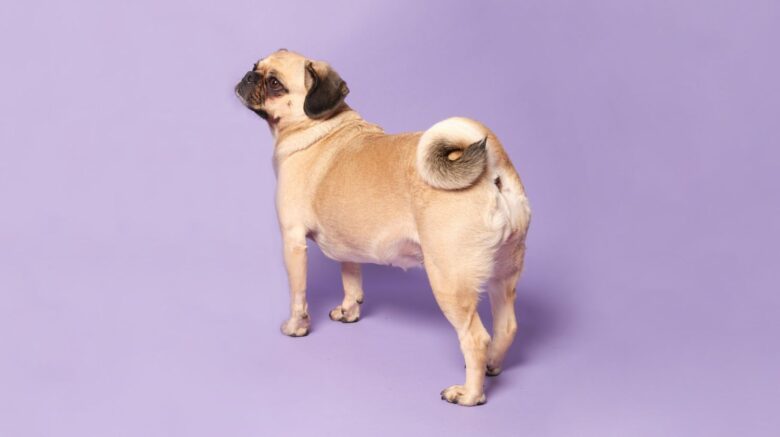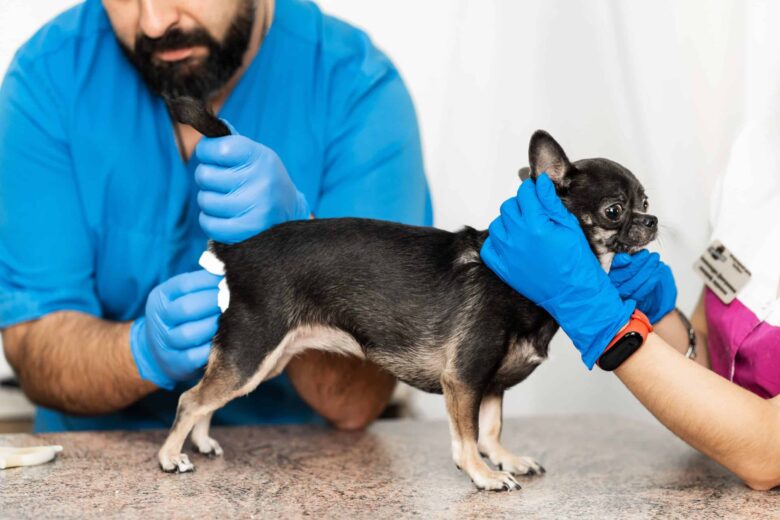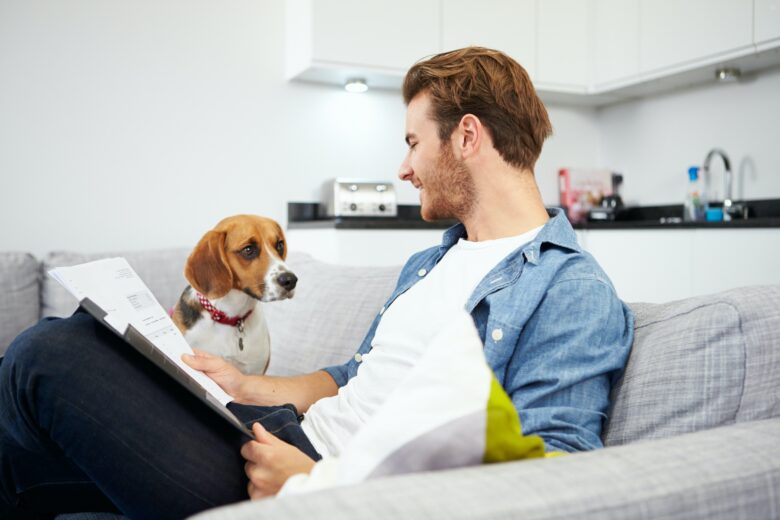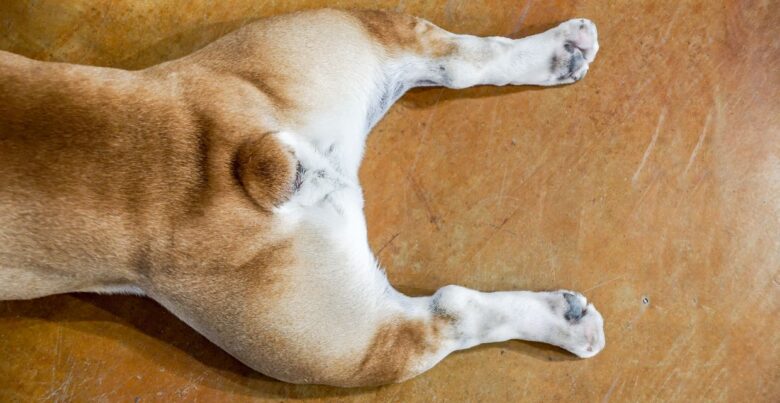For most large dogs, anal glands never become an issue. Small dogs, however, tend to have some difficulty that requires intervention. It might not be your favorite topic of conversation, but it’s important to understand what dog anal glands are, how they function, and how to spot potential problems.
If a dog’s anal glands become overfilled with fluid, there is a potential for inflammation, infection, or rupture. Later in this article, we’ll discuss natural ways to manage these sensitive glands and keep them healthy.
For example, read this article to learn how Vetnique Labs recommends ground pumpkin seeds to decrease inflammation.
Most dog owners know that some dogs get their anal glands expressed manually at the vet or at home, but how do you know when this is necessary? First, it’s necessary to understand what these glands are, and why they exist.
Contents
What are dog anal glands?

Source: poochandmutt.co.uk
A dog’s anal glands are fluid-filled sacs that contain numerous small sebaceous and apocrine glands. They are located on each side of a dog’s anus, and contain an oily brown substance that smells fishy and metallic. This brown substance is a mixture of diamines, scent markers, and fatty acids.
How do dog anal glands work?
Normally, as a dog passes stool, it presses against the sacs and forces the substance out through special ducts inside the anus. This process requires firm stools, so if your dog has chronic issues with digestion or passes soft stools from eating too much fat, they might accumulate too much fluid in those sacs.
What is the purpose of anal glands?
Although there are no concrete answers to this question, it’s speculated that anal glands are designed to facilitate scent marking and communication. This makes sense, since anal gland secretions are added to feces. This suggests that dogs don’t just use urine to mark their territory, but they also use their feces.
Studies on wolf anal secretions show that the makeup of anal secretions is different for male and female wolves, and changes based on the time of year. Some people believe this supports the theory that the secretions are used for communication.
However, scent marking through feces might just be a secondary benefit of the primary function, which could be that anal gland secretions act as a lubricant to help dogs have a smoother bowel movement without tearing anal tissue.
How to know if your dog’s anal glands need to be expressed

Source: dogsbestlife.com
The following signs indicate a dog’s anal glands may be impacted:
- They turn around fast to look at their hind end
- A foul odor coming from their back end, usually metallic or fishy
- They scoot their butt on the ground
- Swelling or redness around their anus
- They lick or chew their hind end frequently
Are your dog’s anal glands getting expressed regularly?
Under normal circumstances, your dog’s anal glands should be expressed on a regular basis each time they poop. If you’ve noticed your dog’s stool is a bit soft, runny, or they have chronic diarrhea, their anal glands probably aren’t being emptied regularly.
While there are other causes for this fluid to back up and anal glands to become overfilled, the most common is loose stools, which can be caused by the following factors:
- Eating a diet too high in fat. Dogs thrive on a high-meat, high-fat diet, but there is a point when it becomes too much. If your dog is consuming an enormously high amount of fat, they will almost certainly end up with loose stools.
- High-starch diets. Dogs don’t have all the enzymes required to break down starch. While they do produce amylase, it’s only in small quantities, and some breeds don’t produce enough to make a difference. The result of a high-starch diet is gut inflammation, which eventually causes loose stools.
- Parasites. When a dog has parasites living in its intestines, the gut flora is thrown off and the dog will experience gut inflammation. This, in turn, causes loose stools.
Regardless of the reason, when your dog’s diet creates loose stools, they don’t have the opportunity to release the accumulated substance from their anal glands. If your dog has impacted anal glands, it needs to be resolved. In this case, you have two options: have them expressed by their vet or groomer, or express their anal glands manually at home.

Source: thetimes.co.uk
Is it really necessary to manually express a dog’s anal glands?
The short answer is yes. Over-filled anal glands that aren’t expressing on their own can create an infection. The longer answer is it depends. Sometimes, you can encourage natural expression by giving your dog probiotics that restore healthy gut balance. If this doesn’t work, manual expression may be your only solution.
The caveat is that if you constantly empty your dog’s anal glands, it can injure the sacs and ducts, creating scar tissue that can prevent natural expression. It can also make your dog’s glands dependent on manual stimulation to empty.
Ultimately, the best solution is to identify the problem causing impacted anal glands and seek to resolve that promptly. The best way to accomplish this is to work with your dog’s vet to create a nutrition plan that will keep your dog’s gut healthy and help create solid stool that will empty their anal glands on the way out.
Prioritize healthy anal glands

Source: vitapet.com
If your dog suffers from impacted anal glands, there’s a reason and it’s probably related to their diet. Kibble tends to dehydrate dogs and is high in starch and insoluble fiber, which can cause an unwanted gut imbalance. If you’ve been feeding your dog commercial dry kibble, consider switching to a raw, homecooked, or freeze-dried diet as advised by a canine nutritionist.
The best thing you can do is talk to their vet and discuss the issue with the intention of finding a long-term solution. Sure, you can keep taking your dog to have their anal glands expressed, or you can learn how to do it yourself.
However, that won’t solve the problem, so focus on resolving your dog’s issue at the root so their anal glands will express naturally and you won’t have to risk causing any damage.
